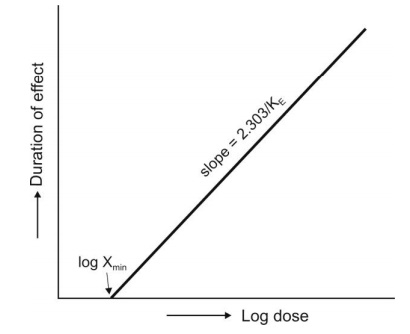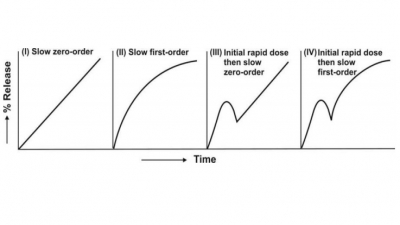Onset/Duration of Effect-Concentration Relationships
| Home | | Biopharmaceutics and Pharmacokinetics |Chapter: Biopharmaceutics and Pharmacokinetics : Drug Concentration and Pharmacological Response
The onset of action of a drug that produces quantal response occurs when a minimum effective level of drug in the plasma Cmin is reached.
Onset/Duration of Effect-Concentration Relationships
The onset of action of a drug that produces quantal response occurs when a minimum effective level of drug in the plasma Cmin is reached. The duration of action of such a drug will depend upon how long the plasma concentration remains above the Cmin level.
The factors which influence duration of action of a drug are:
1. The dose size, and
2. The rate of drug removal from the site of action which in turn depends upon the redistribution of drug to poorly perfused tissues and elimination processes.
An increase in dose promotes rapid onset of action by reducing the time required to reach the Cmin and prolongs the duration of effect. The influence of dose on duration of action can be explained as follows. Consider a drug that distributes rapidly (one-compartment kinetics) and administered as i.v. bolus dose. The plasma drug concentration is given by the equation:

The plasma concentration falls eventually to a level Cmin below which the drug does not show any response. At this time, t = td, the duration of effect of a drug. The above equation thus becomes:

Rearranging to define duration of effect, the equation is:

where CminVd = Xmin, the minimum amount of drug in the body required to produce a response. A plot of td versus log dose yields a straight line with slope 2.303/KE and x-intercept at zero duration of effect of log Xmin (Fig. 13.4).

Fig. 13.4 Relationship between dose of drug and duration of action
Equation 13.7 shows that the duration of effect is also a function of t½ (0.693/KE). With each doubling of dose the duration of effect increases by one half-life. This can be explained by considering that a dose Xo produces a duration of effect td; so when double the dose i.e. 2Xo is administered, the dose remaining after one half-life will be Xo which can produce a duration of effect equal to td. Thus, the total duration of effect produced by 2Xo will be t½ + td. However, the approach of extending the duration of action by increasing the dose is harmful if the drug has a narrow therapeutic index. An alternative approach is to administer the same dose when the drug level has fallen to Xmin. Thus, after the second dose, the drug in the body will be (dose + Xmin). If Xmin is small in relation to dose, very little increase in duration of action will be observed.
Related Topics

